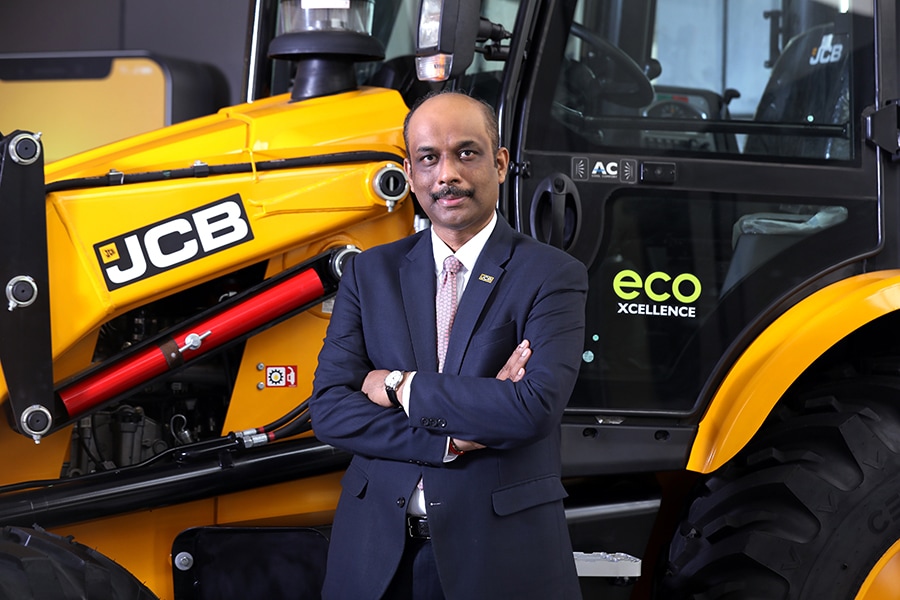
'We're seeing green shoots for our business'
Deepak Shetty, deputy chief executive officer and managing director of the Indian arm of UK-based construction equipment maker JCB, is optimistic of a strong recovery on the back of government's infrastructure push

If you thought that machine learning, artificial intelligence and deep learning are confined to information technology (IT), or at best make sense for the flavour-of-the-season coding business, you’ve got it completely wrong. “Newer concepts like telematics, Internet of Things (IoT), big data and machine learning will play a major role in increasing the efficiency of the sector,” contends Deepak Shetty, who was appointed deputy chief executive officer and managing director of the Indian arm of the UK-based construction equipment maker JCB this August.
There is a significant scope of digitisation and automation, Shetty underlines, in the construction equipment segment. Take, for instance, LiveLink, an advanced telematics technology that connects the machines with customers and JCB on a real-time, 24x7 basis for better asset management. “It helps users increase productivity, control costs and ensure asset safety,” he says, claiming that over 1.5 lakh LiveLink-enabled JCB machines have been sold so far. These machines, Shetty explains, can be monitored for security, operations and service (SOS) on mobile devices. “Machines can be geo-fenced, time-fenced and can be located anywhere,” he says. Customers, he adds, get to know about the machine’s health, fuel level and battery conditions—all critical parameters of the machine—on their mobile. For JCB Group, which entered India in 1979, India is one of the largest markets worldwide. “Despite the current stress, we believe that as a nation, there is significant opportunity for us to become a part of the global supply chain,” Shetty tells Forbes India in an interview. Edited excerpts:
You have been quite bullish about the ‘Make in India’ initiative. How do you see it shaping up for the construction equipment (CE) industry?
Our machines have been contributing to the building of world-class infrastructure in the country for over 40 years. We have five state-of-the-art factories in Delhi-NCR, Pune and Jaipur—all of which operate on the principle of ‘One Global Quality’. Our Jaipur factory is also a significantly gender diverse facility, with over 30 percent of the workforce on the shop floor being women. Our sixth factory at Vadodara is currently underway. Innovation has been the cornerstone of JCB’s operations around the world. In India we have a full design and innovation centre at Pune which is our largest outside the UK. This facility develops exciting and new technologies of the future for global and domestic projects. We thus, innovate, design, manufacture, sell and export from India. We have exported our ‘Made in India’ products to over 110 countries from India.
The recent reforms are aimed at improving demand consumption and liquidity. With the government’s ambition of making India ‘Atmanirbhar’ (self-reliant), it is critical to invest in building world-class infrastructure in the country with greater adoption of technologies like telematics, IoT, big data and machine learning. We need to invest, innovate, create, scale-up and export for growth. India will need to be competitive and strong-willed to be able to compete with global players in all aspects of the value chain, including demand and supply. The shift to local manufacturing has already begun.





